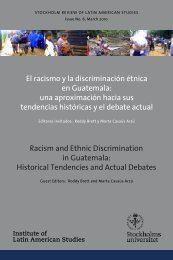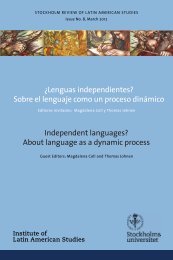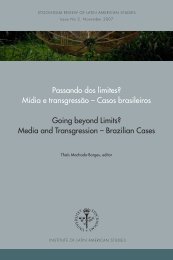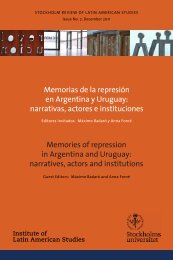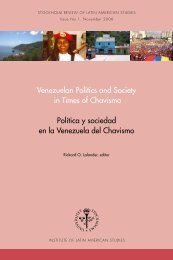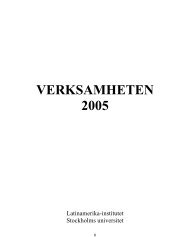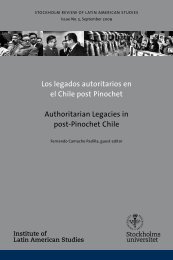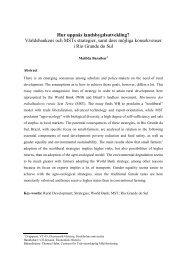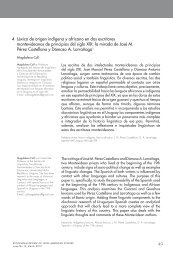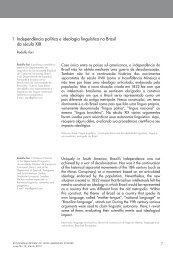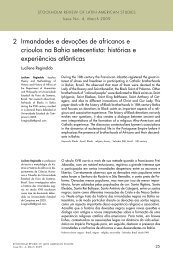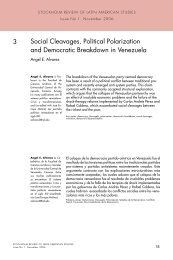Papers - Conference 2009 - Institute of Latin American Studies
Papers - Conference 2009 - Institute of Latin American Studies
Papers - Conference 2009 - Institute of Latin American Studies
You also want an ePaper? Increase the reach of your titles
YUMPU automatically turns print PDFs into web optimized ePapers that Google loves.
institutional incapacity <strong>of</strong> the state to face it. This jurisprudence underlines acluster <strong>of</strong> rights which ought to be guaranteed to displaced people. These rightsare: the right to life, the right to dignity, the right to physical, moral andpsychological integrity, the right to family unity, and the right to a minimumsubsistence. The sentence T-025 <strong>of</strong> 2004 is the result <strong>of</strong> 109 direct cases betweenthe Court and victims <strong>of</strong> displacement, as in the acción de amparo the directaccess to the Corte Constitucional as previewed by the Spanish system orGermany, Mexico, Argentina and so forth.The UN Refugee Agency in its review <strong>of</strong> public policies policies from 2004 to2006, (ACNUR, 2007, 18) highlighted the great efforts made by the Colombiangovernment to amend estado de cosas incostitucional: this is due to the fact thatT-025 <strong>of</strong> 2004 sentence mobilised many institutions. However, the gap betweenCorte Constitucional decisions, juridical debate, public politics and effectiveimplementation <strong>of</strong> actions is still great. What would be the protection <strong>of</strong> internaldisplaced people without the intervention <strong>of</strong> the Corte Constitucional? In thisscenario it is interesting to underline the basic role <strong>of</strong> the Corte Constitucional asan engine <strong>of</strong> public policies. It’s like if judicial power sometimes take the place <strong>of</strong>the legislative one, in other words, it stimulates the legislative power to interveneand take measures to meet the needs <strong>of</strong> displaced people. Corte Constitucionalcan be considered a “guardian” that monitors legislative power and does not letsuch law lie inactive. Some authors –Blanquer for example- would recognize thisone as a situation where “judge makes law”. (BLANQUER, 1993, 17).The gap between the demand for protection and assistance by displaced peopleand an effective institutional toward public politics response has widened.Although this statement is to some degree valid for the National System forIntegrated Assistance to displaced people, it is particularly true for the preventionand reintegration components. Factors which contribute to this disparity are foundin the political and economic context, as well in the conceptual weakness <strong>of</strong> theformulation <strong>of</strong> policies and strategies but above all, in the wide range <strong>of</strong> obstaclesrelated to implementation. The political context <strong>of</strong> continuation, intensification20



